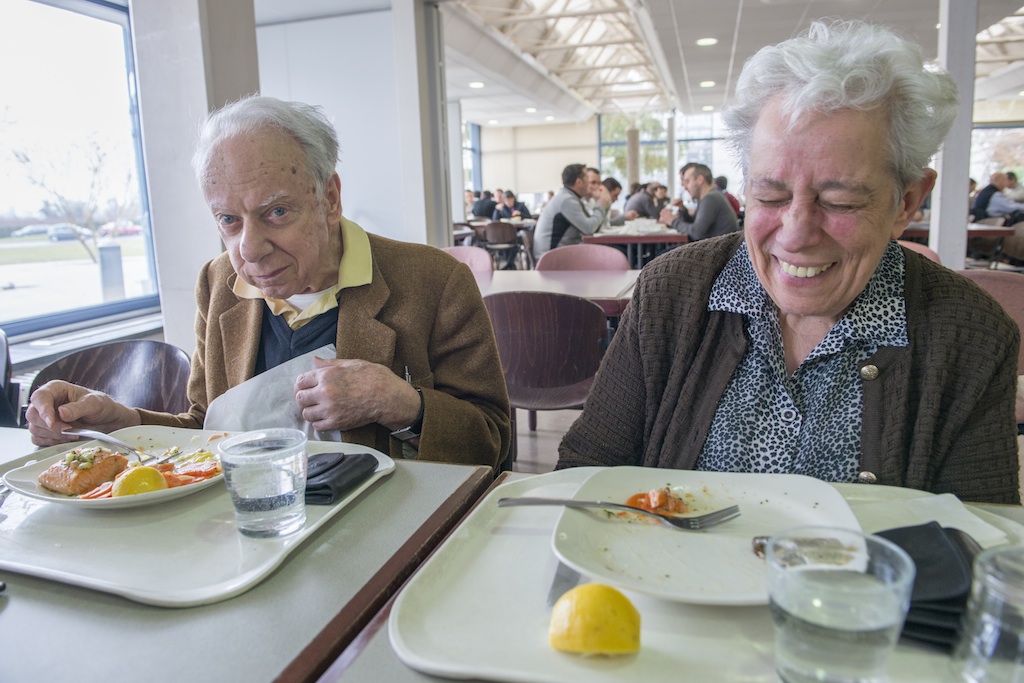CERN will be celebrating its 60th anniversary this year. That means 60 years of pioneering scientific research and exciting discoveries. Two Italian physicists, Maria and Giuseppe Fidecaro, remember nearly all of it since they arrived in 1956. Most impressively, they are still hard at work, every day!
The couple is easy to spot, even in the cafeteria during busy lunchtimes, where they usually engage in the liveliest discussions. "We argue quite a lot," Maria tells me with a big smile. "We have very different styles." "But in general, in the end, we agree," says Giuseppe.
In October 1954, Giuseppe went to the University of Liverpool as a CERN Fellow to do research with their brand new Synchrocyclotron. Maria also joined, having obtained a fellowship from the International Federation of University Women. After getting married in July 1955, they carried out experiments on pions, Giuseppe with a lead glass Cherenkov counter, Maria with a diffusion chamber.
In summer 1956, both moved to Geneva, and Maria got a CERN fellowship. "There were only about 300, maybe 400 people at CERN then," says Maria. A beautiful mansion called Villa de Cointrin housed the administrative offices on the airport premises, while physicists had their offices in nearby barracks.
Giuseppe was assigned to the Synchrocyclotron Division. This was the first accelerator built at CERN and was operated from 1957 until 1990. Giuseppe set up a group and prepared the basic equipment for experiments that was used in 1958 for a successful search for pions decaying into an electron and a neutrino. This was a hot topic at the time and was the first experiment involving a CERN accelerator. "The news went all over the world overnight," recalls Giuseppe. Recently refurbished, the synchrocyclotron will soon become a permanent exhibit at CERN.
Meanwhile, Maria worked on a novel method to provide polarised proton beams. "It was just a mere 10 years after the end of the war. The war feelings were still very much there," she says. "But it was really easy to work with each other," says Giuseppe. "Everybody got along; we all had a common goal."
Although there were very few women when she started, Maria feels she was respected by her peers. "In my group, I was simply one of them," she says.
Today, long after most have retired, they have both chosen to remain active and are still doing research but of another style. Giuseppe delves in the history of physics while Maria is happy to revisit some of her past work, making sure she did not overlook any important detail. "In the heat of the moment, with the beams on and everything, there was no time to have a broad view," she says. "It’s a pleasure to go back and gain a deeper insight, and put our work in perspective with respect to what was going on at CERN and elsewhere."
Both agree: every moment was good. "Having gone through all of it for 60 years is what has been best," Maria says. "It was great to be able to pioneer so many different experiments," adds Giuseppe. "And to share work with so many interesting people."
Maria confirms: "Life has been kind to us."

